Every year by the end of the first Semester the third year students Interior Design work on the GIDE project. Gide stands for Group for International Design Education (see below) and part of the collaboration is a shared assignment that students around the world work on.
The theme of this year is
‘Flowing Spaces – City in motion’,
a theme which is very appropriate for the city of our home town Mechelen, a city where the presence of water is very prominent because of
- the river Dijle
- the bypass Dijle
- the canal Leuven-Dijle.
Furthermore Mechelen has been undergoing a lot of urbanistic and environmental changes during the last decades, so therefore it’s a ‘city in motion’. Five different locations in Mechelen were determined to be crucial in city development. And each group had to focus on the location of their choice.
26 groups of students got this assignment:
Try to imagine how you can:
- stimulate and enhance interhuman interaction
- improve the spot by creatingan appropriate design.
The outcome of your design can be very different:
- a ‘water furniture’
- an architectural or urbanisticinter vention
- an installation
some images of the best design proposals:
THE RISE
by Kris Van den Heuvel, Thomas De Jonckheer, Marieke Evans , Nick Van Berlo, Nicolas Van Dessel & Annabelle Strover.
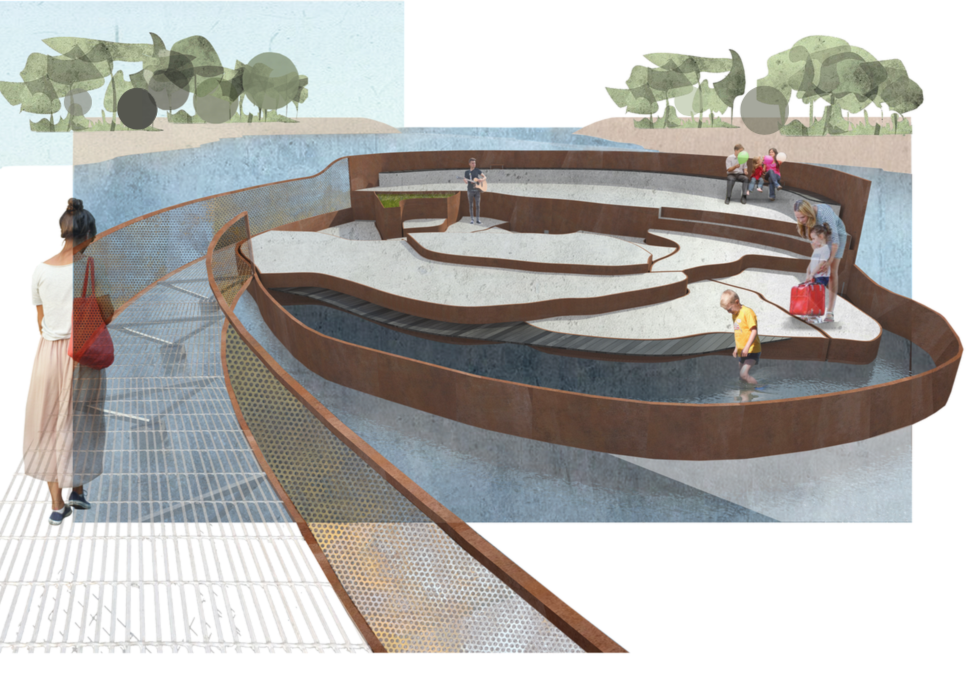
“Positioned in the middle of a highly vegetated and peaceful section of the Lower Dyle, the structure takes on the shape of the inner ring of the city. The original waterways are displayed as cracks in theplatform’s structure, allowing for the river water to fill these voids and hence become a material within the design. The smaller platforms created by the waterways have been pushed and pulled tovarious heights based on the topography of Mechelen. High points act as seating areas, while the lowest points are affected by the tide of the river as water is able to flood through the space– anenticing feature as the experience of the platform is in a constant state of flux.”
YOUR WAY UP
by Joyce van Tuijl, Kayleigh van Neerven, Milou Trommelen, Nikki Snoek & Minka Pelkmans

“The future Comet project will provide in sustainable housing on this location, will pay attention to the existing nature and create new and will discourage the use of cars. This design project supports this project by focussing on the residents and the visitors by offering them a pleasant spot to come together and rest. It’s a meeting place for the neighbours and bypassers and stimulates interaction on site.
The future shape of the landscape is the inspiration for the plan of the viewpoint. This shape is pulled up and stairs are provided with sitting elements. Also under the viewpoint there will be sitting places and a place to park bicycles. The cyclists will ride under the stairs, so they will have the feeling that they ride under a bridge. The viewpoint and meeting place add value to the neighbourhood.”
DIJLE BRIDGE
by Brent Staes, Carlo Janssen, Stan van der Brand, Dennis Houben & Joris Vos.
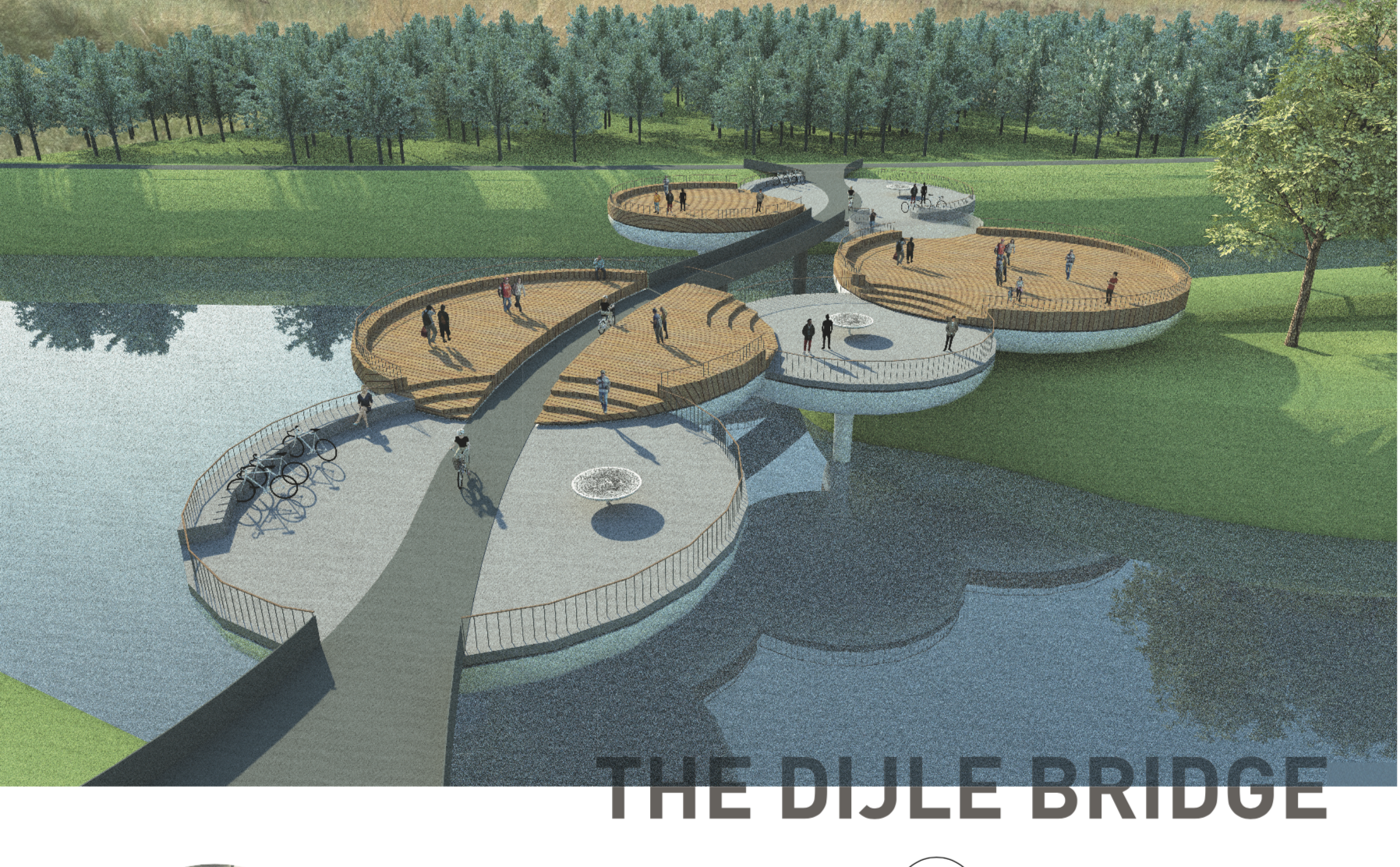
“At the upstream-sluice located at the bypass of the Dijle is a beautiful nature reserve that is hardly used by the residents and tourists from Mechelen. The aim of our design is to make a connection between the city and the sport facilities around the nature reserve. Several resting points along the bridge will enable you to admire the beautiful nature and to take a rest. The design of the bridge is inspired by the ‘’drops’’ of Mechelen, a symbol on different tiles around the city to indicate there used to be a river.”
BIRDPOINT
by Cato van Liefferinge, Chantal van Rijswijck, Chiara Verberne, Jessy Heldens, Melissa Van Rooij & Shenna Marcellis
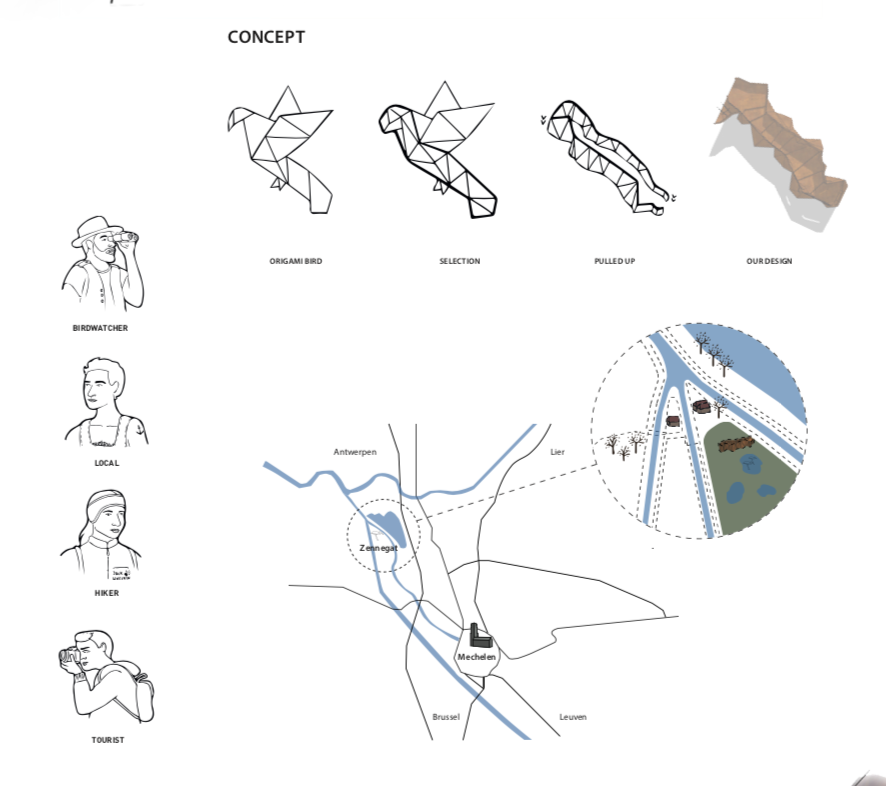
Birdpoint is a pavilion located in the Zennegat, a nature reserve at about 8 km from the centre of Mechelen (Belgium). It is dedicated to nature lovers, bird spotters, cyclists and hikers, but also for tourists. This target audience comes especially to enjoy nature, the splendid views and the special bird species that the Zennegat offers. The pavilion offers a view over the marsh in the flooding area, it is divided into different heights with various viewpoints for the visitor, young and old. These level differences ensure that the visitor can enjoy the view in peace. The origami design is based on the contours of the bird and gives a very dynamic effect. The pavilion is made of corten steel, this ensures that it falls away perfectly in the environment and does not disturb nature. The information about what the nature offers is engraved in the corten steel.
NEKKER IN MOTION
by Anja Klinkenberg, Manon Cammaert, Sven Huysmans, Caroline De Queker & Cindy Wessels.
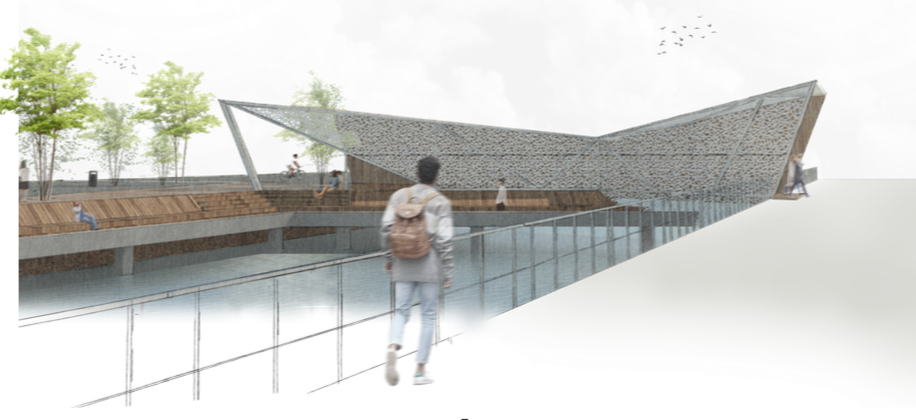
“The location that we chose for the GIDE project is the Dyle at the quarters of Nekkerspoel. We re-designed the existing bridge that will draw people from the city to the outskirts and vice versa. Next to the bridge we created a meeting place where people get a closer connection with the water, since we have taken into account the high and low water. We added more ‘green’ by adding some trees to the area.”
MOBIUS
by Antonie Vis, Aoran Sun, Michelle van Os, Ying Liu & Yvenca Tindal
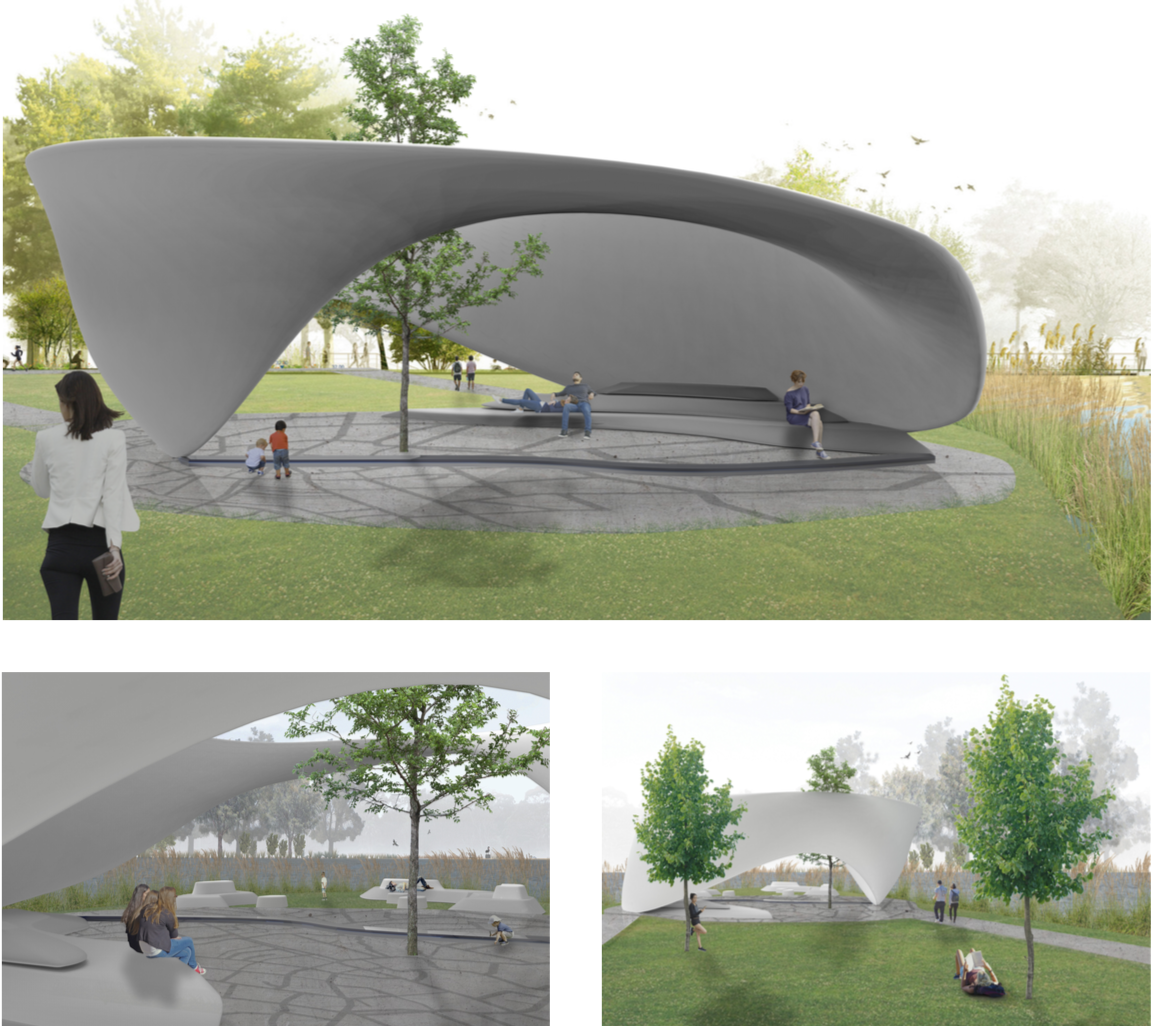
“For our project we used the city center map to create the shape of the pavilion. The tree in the middle of the pavilion represents the Sint-Rombouts Tower, which is the highest and most iconic tower of the city. This tree indicates the current season, which ensures that you get a different feeling every season. In the pavilion people can meet each other, enjoy the nature and relax. Everyone is welcomeand can feel safe here. There are also bicycle parking facilities because of the many cyclists. This small version of Mechelen will certainly add value to the city.”
Between 18th and 22d of February a group op students and teachers will present the six winning banners in an exhibition during an international workshopweek in Dundee in Scotland. The banners of other schools will also be presented in the same exhibition.
ABOUT GIDE:
the Group for International Design Education is a unique network of eight higher education partners which was established in 2003 but which evolved from an earlier inter-cultural network in the nineties.
The GIDE network delivers annual inter-cultural design experiences in collaboration with local sponsors, industry, researchers and creative and cultural organisations in an EU city.
The network operates on a February to February cycle and uses an interdisciplinary workshop week to bring students, academics and researchers together to explore the cultural, social and/or ethical dimensions of design. This workshop week this year in Dundee between 18 and 22 of Fabruary) also combines a symposia, an exhibition and culminates in a later research publication. Workshop outcomes sets the critical and creative parameters of a formal ‘shared project’ delivered by each partner school from September to December. GIDE exists to enrich students’ intercultural experiences and provides dynamic opportunties for institutional knowledge exchange and provides a more inclusive and integrated alternative to existing ERASMUS+ / Study Abroad exchange schemes. GIDE currently consists of eight higher education partners institutions from leading schools in;
- Dundee, (Scotland/UK): Duncan of Jordanstone College of Art & Design
- Wuxi, (China): School of Design at Jiangnan University
- Ljubljana, (Slovenia): Faculty of Design of University of Primorska
- Funchal, Madeira, (Portugal ): Universidade da Madeira, Faculdade de Artes e Humanidades – Departamento de Arte e Design
- Mechelen, (Belgium): Unit Interieur, Design & Architectuur van Thomas More
- Magdeburg, (Germany): Stendhal University of Apllied Science
- Milano, (Italy): Politecnico di Milano
- Lugano, (Switzerland): La Scuola Universitaria Professionale della Svizzera Italiana
